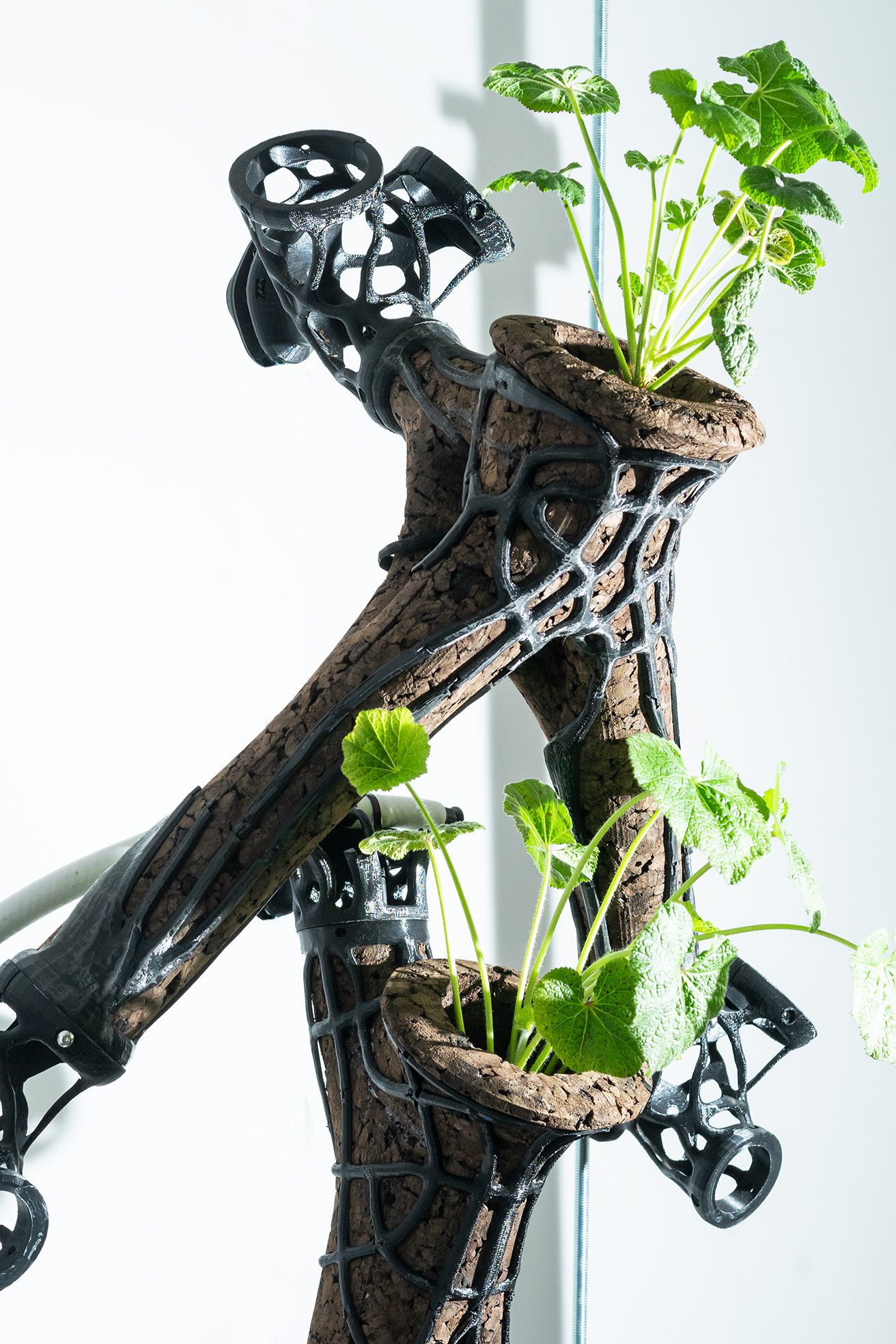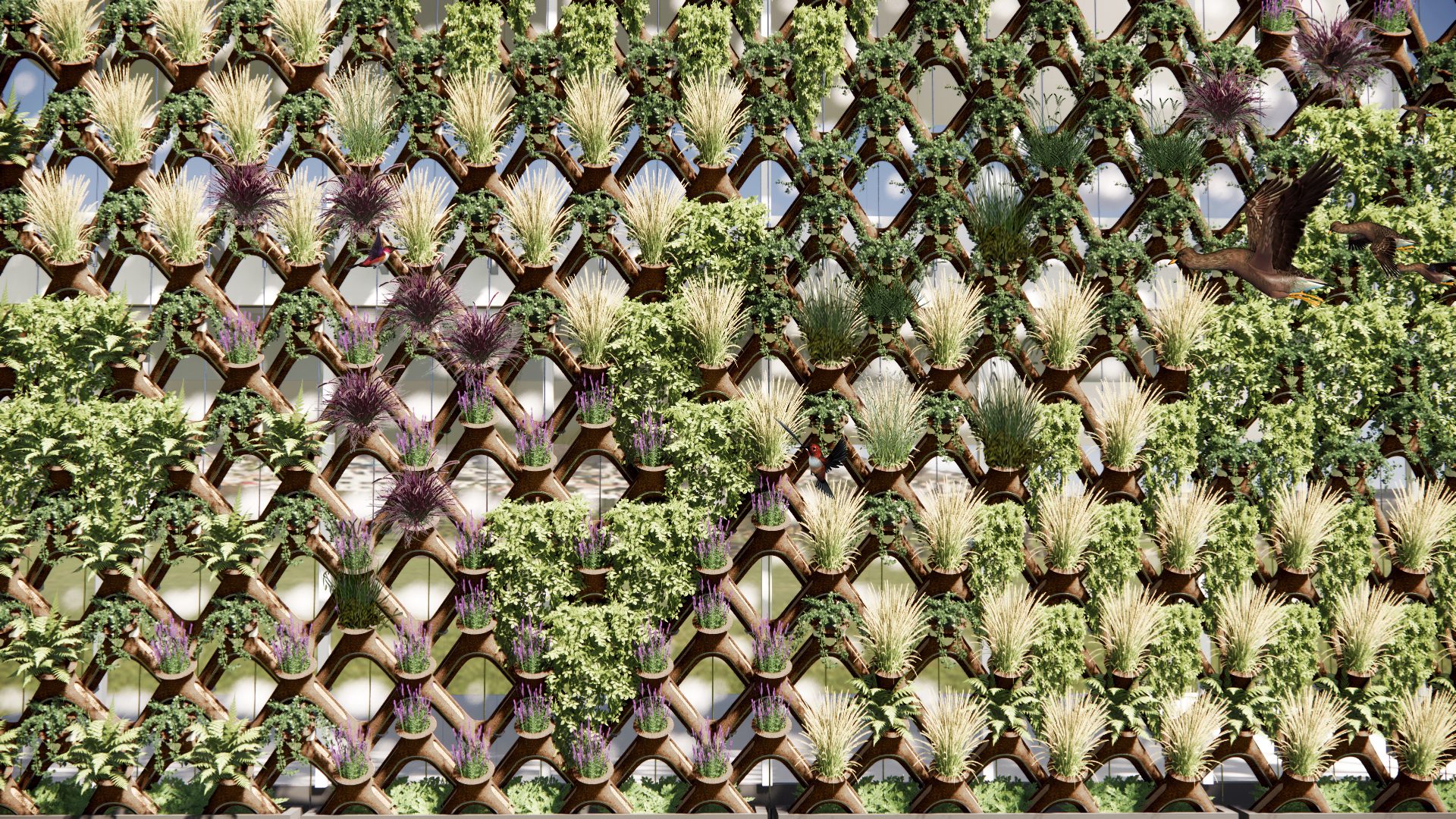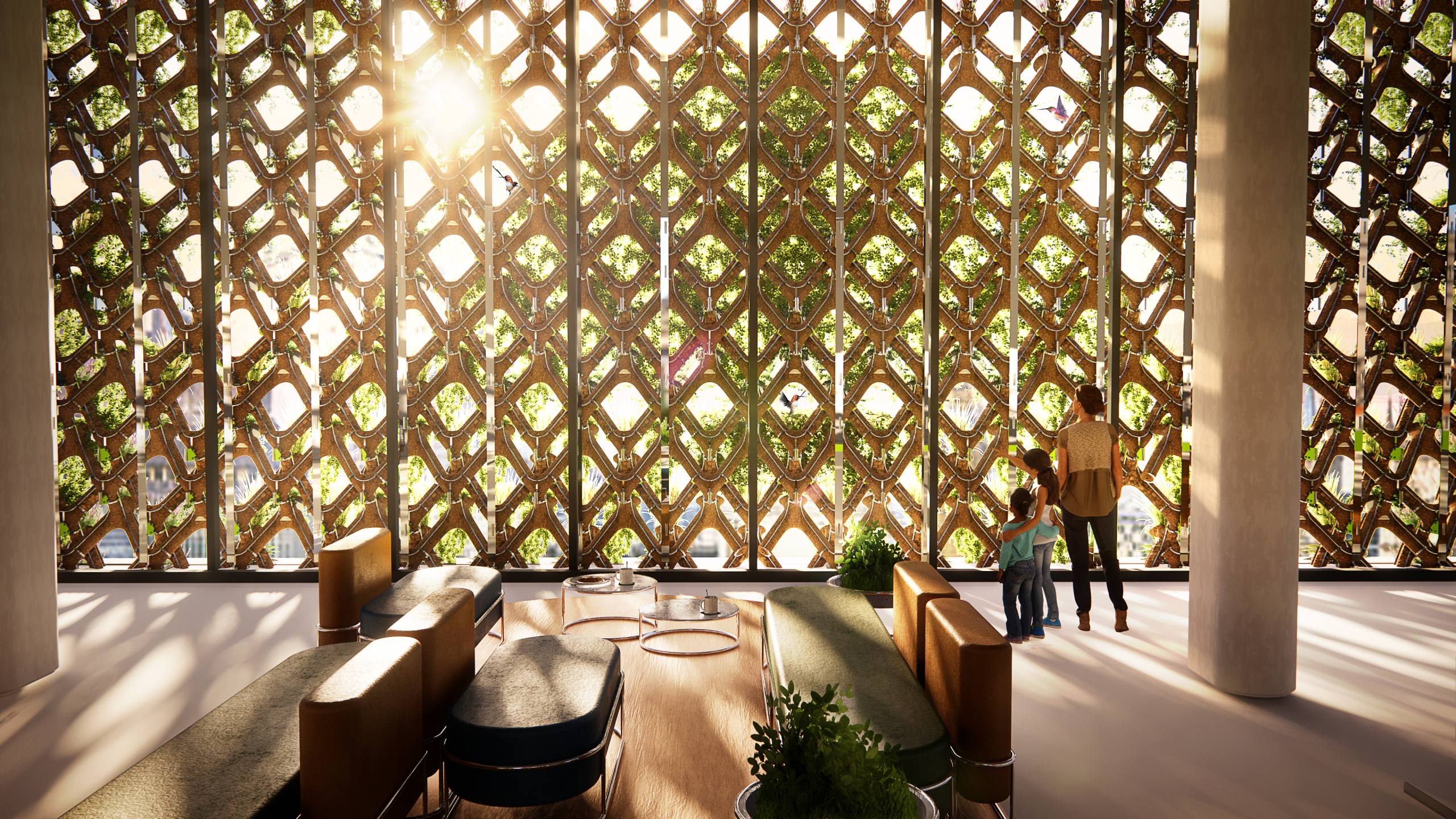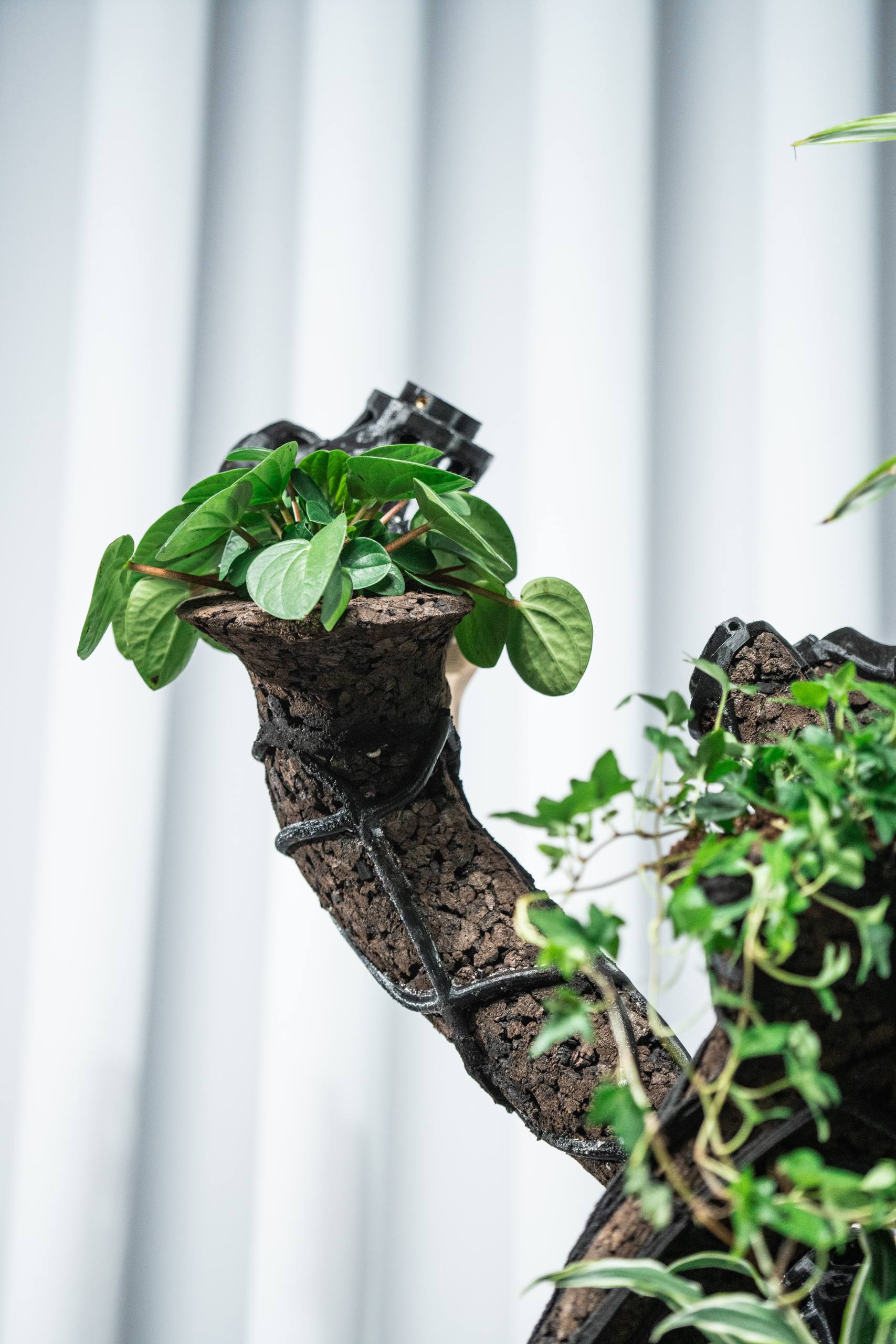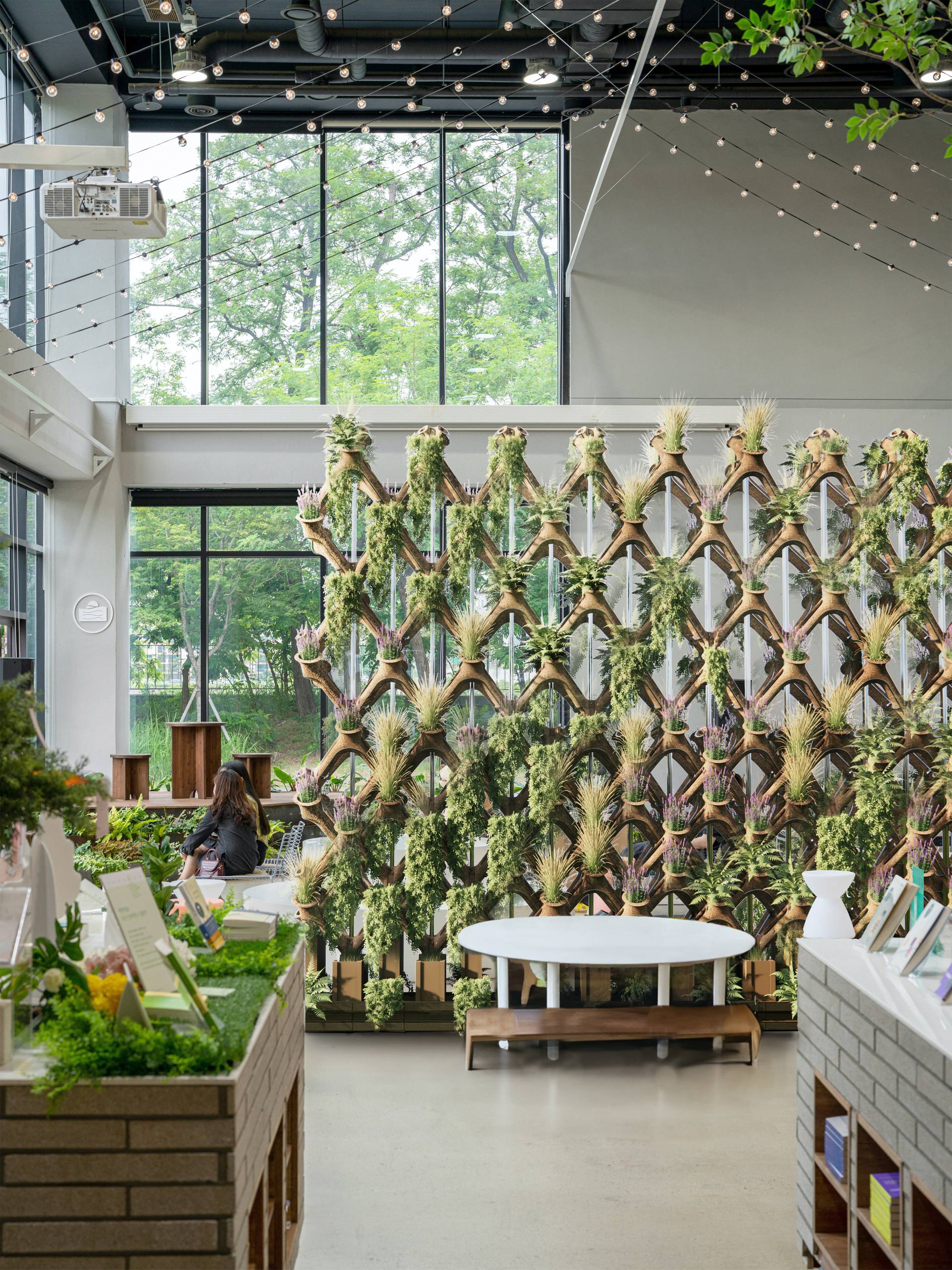Living Wall System – The Living Lattice/
Mac Van Dam
Project Details

Location(City/Country):
- / -
Typology:
Landscape
Year (Design/Construction):
- / 2022
Area (Net/Gross):
- / -
Operational Carbon emissions (B6) kgCO2e/m2/y:
-
Embodied Carbon emissions (A1-A3) kgCO2e/m2:
-- The Living Lattice is constructed out of cork, a natural material that is sustainably harvested.
- Cork is anti-microbial and hydrophobic and therefore seemed to be an ideal natural material to replace plastic in greenwall systems
- The modules are supported by a lace-like skeleton which can be designed custom for each client based on their needs.
- The Living Lattice provides abundant soil, and space for plant roots to grow into maturity.
University of Waterloo and UCL’s Bio-integrated Design Lab
Cork is the main protagonist of Mac Van Dam’s project, “Vertical Grounds” – presented at the 2022 Lisbon Architecture Triennale. The installation is composed of large organic structures, in which the dark colour of the expanded agglomerated cork contrasts with the green hues of the natural plants. It aims to offer an ecological alternative to conventional vertical garden systems.
“Vertical Grounds” is an ongoing design and research project that attempts to push the limits of cork fabrication while searching for ecological alternatives to conventional green wall ( vertical garden) systems. After building and researching several green walls, I realised that there are two primary problems that need to be addressed if green walls are going to become truly ecological and make a contribution to healthier cities. First, green wall systems must stop using plastic. Second, there needs to be abundant space for the plants’ roots to grow into maturity, and thus become resilient and structural. The project “Vertical Grounds” confronts these issues by designing cork tapestries that host rich bio-diversities.
The ecological role of cork and its primary molecule, suberin is to serve as a protective barrier for the tree’s roots and other vascular systems. Cork is anti-microbial and hydrophobic and therefore seemed to be an ideal natural material to replace plastic in greenwall systems.
After experimenting with cork at UCL.:s Bio-ID Lab, I developed a novel cork bio-plastic which I use to reinforce ONO-milled hollow cork components. After robotically milling expanded cork blocks into hollow forms, I collect the waste powders from the process and transform them in to a bio-plastic, without using any synthetic binders. I then robotically extrude this paste on to the hollow forms, to increase the structural integrity of the components, while creating a closed-loop fabrication process. This allowed me to create highly expressive components, alluding to baroque design and fundamental geometries found in nature. My goal is to create a larger wall where we can watch vines and flowering plants grow into maturity.
The Canadian designer Mac Van Dam received technical assistance from AOC Design Studio, and cork from Amorim Cork Insulation, for his project, “Vertical Grounds.
As cities continue to grow, bio-diversity loss is increasing. As an architect and designer, I feel it is important to counter this trend by reintroducing living organisms, such as plants, into urban spaces. One way to do this is by embedding them into our architecture. Living organisms are able to capture carbon and pollutants in the air, while creating micro-climates for other organisms, such as birds and bees.
Furthermore, there are many studies that indicate people prefer environments that have visible bio-diversity. As our digital world continues to expand and become a larger presence in our social lives, it is important not to forget about the beauty found in the physical world. I hope to create spaces and objects that re-engage people with the incredibly important physical, material and ecological world.
This project began when Raquel Laranjeira introduced me to Cork, while she was running a workshop for designers at Domain de Boisbuchet. There we shared a vision about cork’s possible contribution to bio-design, and we forged a strong relationship. This project would not have been possible without the support of Amorim. The knowledge of the community and the desire to work with experimenting designers has truly created a unique and powerful output.
Mac Van Dam is an interdisciplinary designer who works between London and Toronto. He studied Bio Integrated Design at the Bartlett School of Architecture, University of London and was a research fellow in the Living Architecture Systems Group at the University of Waterloo, Canada. He has taken part in exhibitions at the Venice Biennale, Lisbon Triennale and has worked with several brands and artists.
Mac developed the project during his second year studying Bio-Integrated Design MArch/MSc.
- Photographer: Manuel Casanova


